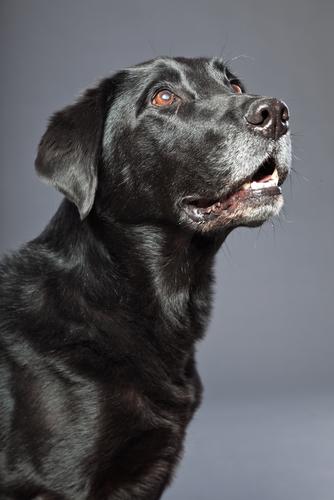Man's best friend — the dog — is a versatile creature. Dogs can work as herders, guards, guide dogs and even provide therapy for hospitalized patients. But which dogs are suited to which tasks (and here I mean individuals, not breeds) must be uniquely determined. There are behavioral tests, to be sure, and now there seems to be yet another way to tell whether a dog's personality can suit it to the job of ministering to the sick. And strange as it may seem, whether or not the dog becomes prematurely gray (i.e. before the age of 4 years) could provide the key.
In a study recently published in the journal Applied Animal Behavior Science, researchers led by Dr. Camille King from the Canine Education Center, LLC, in Aurora, CO. investigated whether premature graying in young dogs (1-4 years old) was linked to certain behavioral parameters. They devised a means of describing the extent of graying of a dog's muzzle, as shown in the picture below:

Only dark-colored dogs were assessed — obviously, the degree of graying wouldn't be visible on light animals. Four hundred dogs were involved in the study.
The investigators had the dogs' owners (who did not know the purpose of the study) complete questionnaires about various aspects of their animal's behavior and health. In particular, they were interested in behaviors indicating the animals might be under some stress, or might be inherently impulsive.
So the dogs' owners were asked several questions to indicate anxiety, including:
- Is the animal typically fearful?
- Whines or barks when left alone at home?
- Responds to groups of people by cringing, cowering, hiding or avoiding interaction?
Some questions were indicative of impulsivity:
- Jumps up on people when greeting them?
- Pulls on the leash when going for walks?
- Loses focus and ignores me if there's a lot of activity in the environment?
The dogs in the study averaged 2.5 years old. They included both males and females, both neutered and not. Most were considered large-medium sized dogs (e.g., German Shepherds, Boxers, Airedales, Golden Retrievers).
Data analysis indicated that high levels of anxiety and impulsivity significantly predicted the extent of muzzle grayness. Older age and female sex were also significantly associated with the degree of graying. In addition, fear responses to loud noises, unfamiliar animals, and unfamiliar people were also associated with an increased muzzle graying.
Thus premature muzzle graying might indicate that a dog will have a greater probability of high anxiety, impulsiveness and fearful responses to strange people or animals. Such characteristics make it unlikely that an animal would fare well as a therapy animal, but the knowledge that a dog has them might be useful in training situations.




